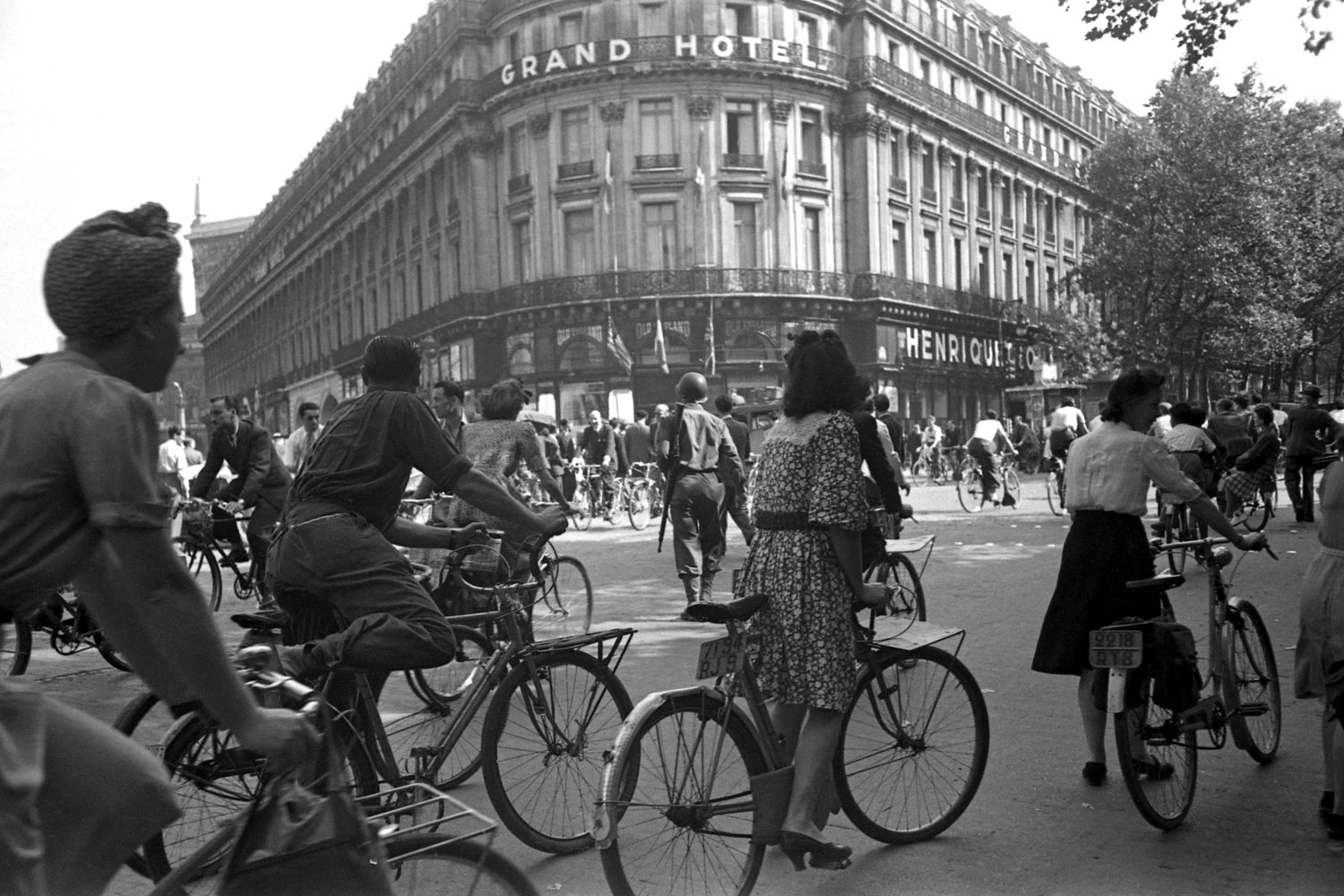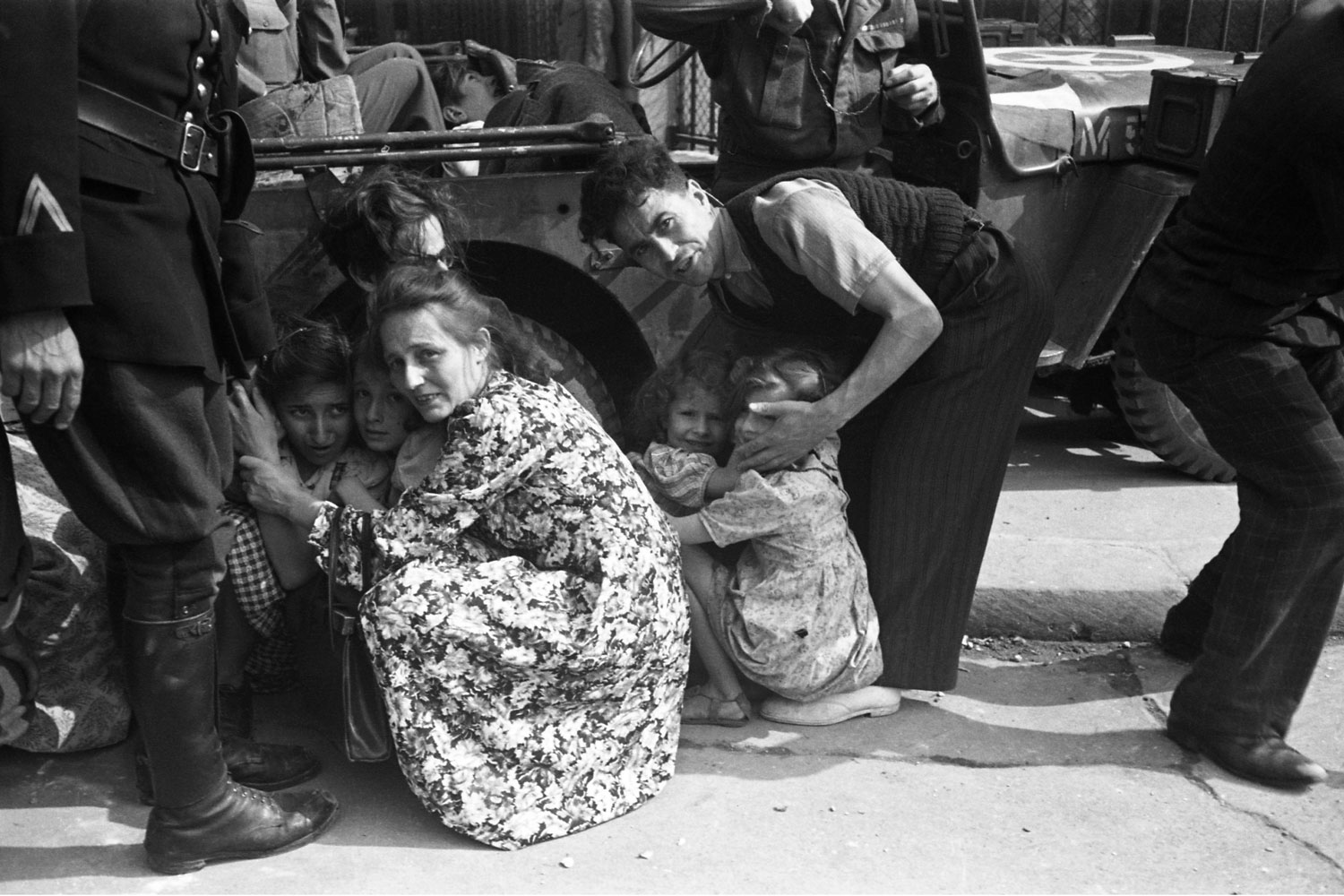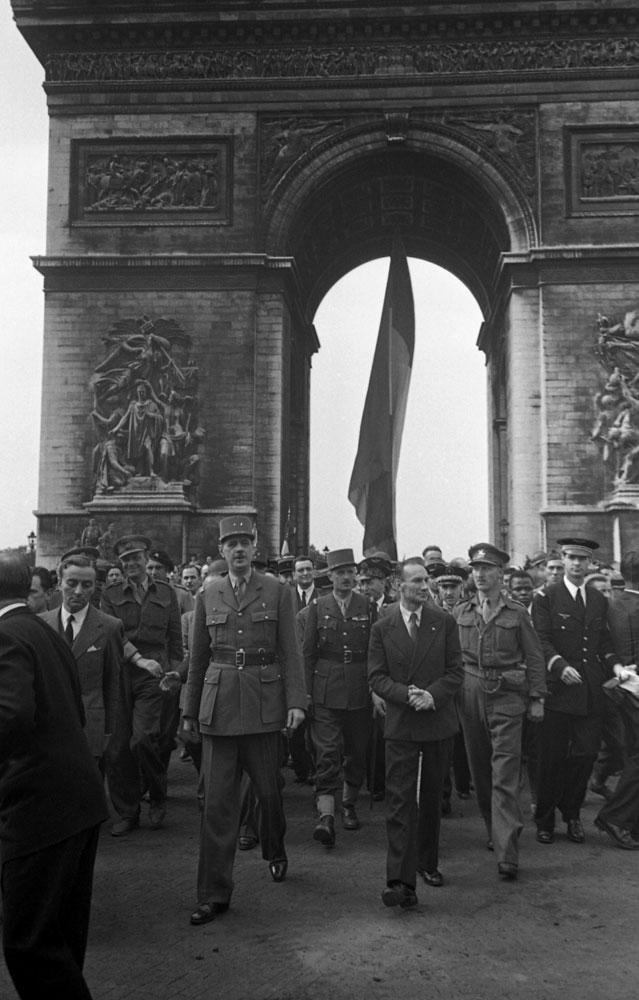
In the long, cruel struggle of World War II, opportunities for celebration were scarce. But even among the era’s handful of “wish you were there” moments—Russian and American troops meeting at Germany’s River Elbe in April ’45; V-J Day in Times Square—for sheer, cathartic hope, none surpassed the Liberation of Paris. The capital was ultimately freed, on August 24-25, 1944, by a combination of troops from the 2nd French Armored Division, granted precedence by Eisenhower in his role as Supreme Allied Commander; resistance fighters, of many nationalities, who had been battling the Germans in and around Paris for years; and Americans, primarily from the 4th Infantry Division.
LIFE photographer Ralph Morse, now 96 years old, recalls being outside Paris in a press camp—he was covering George Patton’s Third Army and its sweep toward the Rhine for LIFE—when, he says, Ernest Hemingway, who was also in the camp, offered a suggestion.
“I knew Hemingway pretty well because his later wife, Mary, had worked for LIFE, and she had reported with me on a few stories,” Morse told LIFE.com. “So, we’re in this camp, waiting, and Hemingway says, ‘You know, the Germans can’t possibly have mined every road into Paris. Why don’t we find a back road? We can be at the Champs-Élysées before the troops get there.’ Of course, we did make it into Paris . . . but not the way Hemingway wanted.”
“Hemingway’s idea,” Morse recalls, “to get into Paris before U.S. troops headed in was scuttled because someone—Maybe a reporter who wasn’t invited along? Who knows?—someone leaked the plan to Patton, and before we knew it, the press camp was surrounded by military police. Patton walks in and says, ‘If any of you make a move toward Paris before the troops do, I’ll court martial you!’ Anyway, we went in shortly afterward. It was a quick trip from the outskirts, because there were so few Germans left to stop us.”
Strikes in Paris—by railway workers, cops, postal workers—and a relentless guerrilla resistance had shown that, by then, the Germans’ hold on the city was tenuous, at best. When word spread that the Nazi military garrison in the capital had surrendered, the streets erupted. Wine flowed. People laughed, sang “La Marseillaise,” wept.
“It was an amazing sight, an amazing feeling,” Morse recalls. “So many people in the streets, holding hands, everyone headed for the Champs-Élysées and the Arc de Triomphe, the same way that everyone in New York heads to, say, Times Square when something momentous happens. It really was . . . well, liberating.”
“One thing that really stands out,” Morse says of those indelible days in Paris more than six decades ago, “is the feeling of certainty in the air. Everyone knew it was over. And I don’t mean the battle for Paris. I mean the war. We all knew there was a lot of fighting left. The Battle of the Bulge a few months later proved that, and who knew what was going to happen in the Pacific? But when the Germans surrendered Paris, we all sensed it was only a matter of time, and not much time, before we took Berlin.”
Ben Cosgrove is the Editor of LIFE.com
Liz Ronk, who edited this gallery, is the Photo Editor for LIFE.com. Follow her on Twitter @lizabethronk.









More Must-Reads from TIME
- Donald Trump Is TIME's 2024 Person of the Year
- Why We Chose Trump as Person of the Year
- Is Intermittent Fasting Good or Bad for You?
- The 100 Must-Read Books of 2024
- The 20 Best Christmas TV Episodes
- Column: If Optimism Feels Ridiculous Now, Try Hope
- The Future of Climate Action Is Trade Policy
- Merle Bombardieri Is Helping People Make the Baby Decision
Contact us at letters@time.com